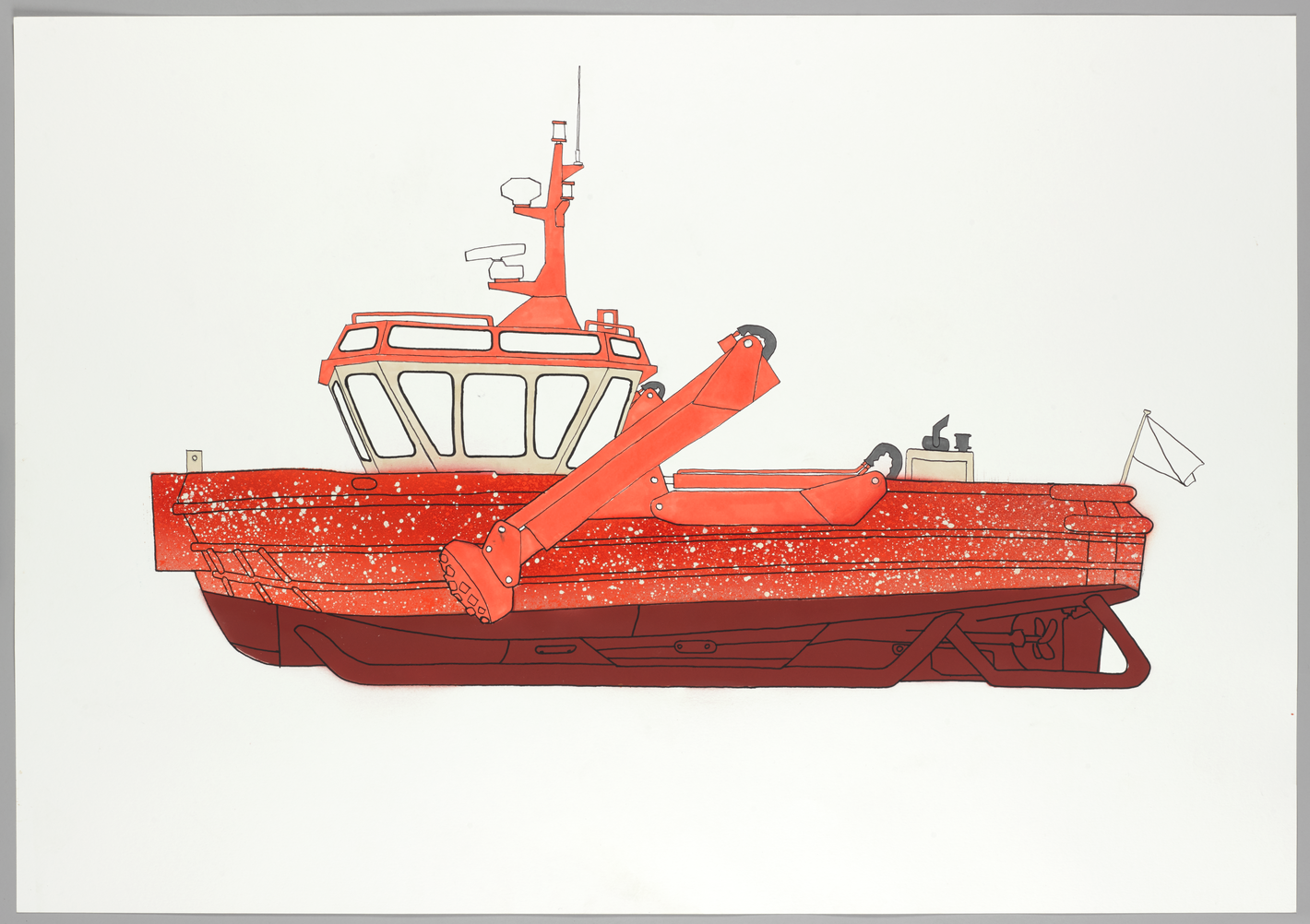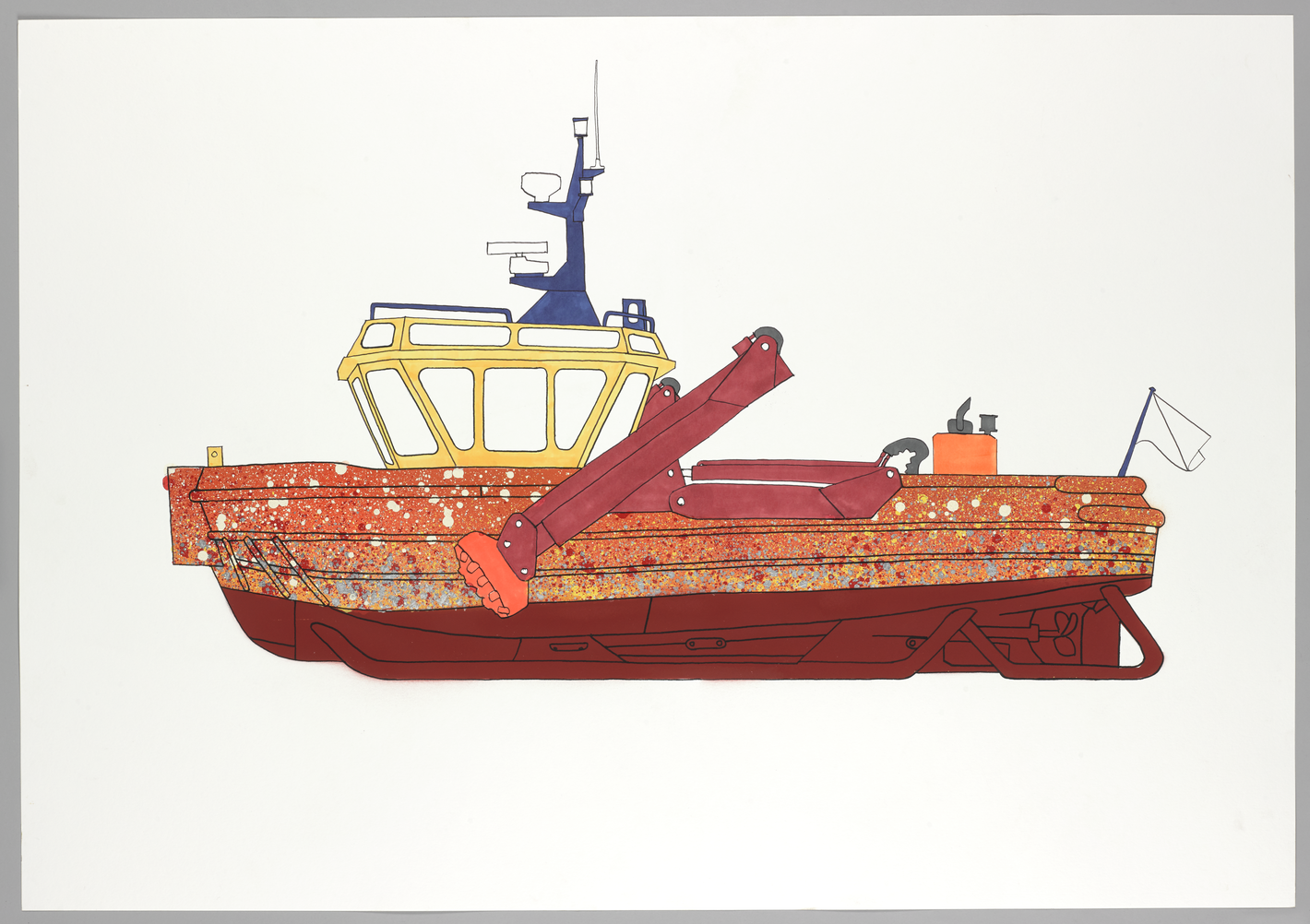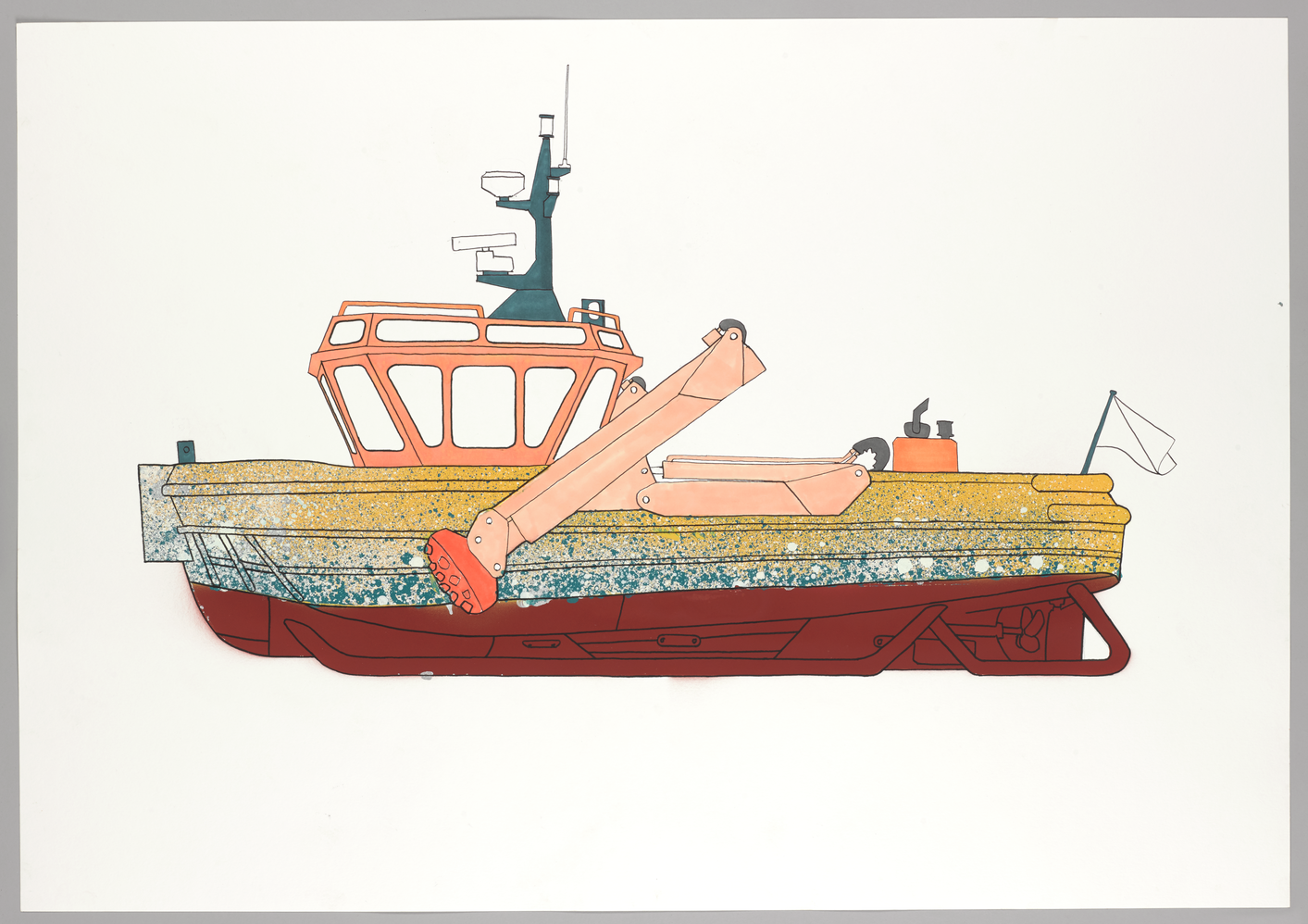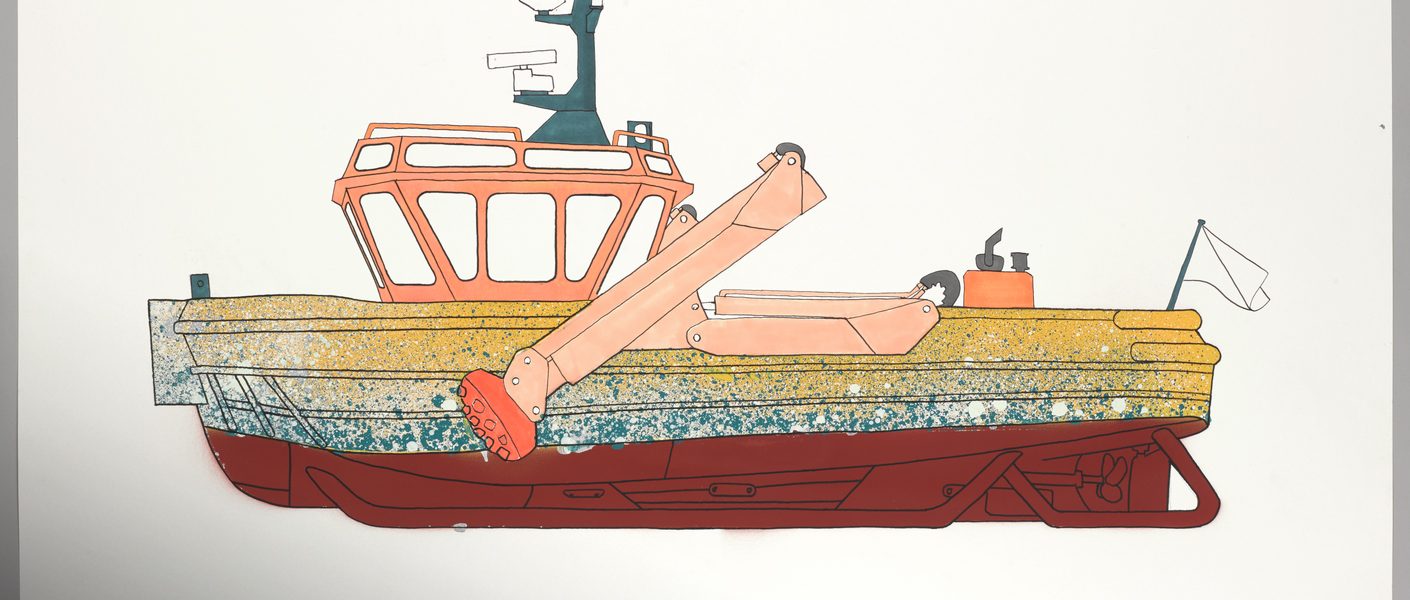As part of the Great Exhibition Road Festival, a mobile sculpture will be installed on Exhibition Road on Saturday 29 and Sunday 30 June.
Look out for Mountaineer Prototype by James Capper moving its way up and down the road as you make your way between events. You’ll be able to watch the artwork in action, operated by trained volunteers from Imperial College and the Royal College of Art.

Capper’s works require the marriage of artistic and engineering skills and are constantly experimental in their technical and sculptural development. Mountaineer Prototype is part of a series of kinetic works by James Capper under the ‘division’ ‘Earth Marking’.

Each ‘division’ focuses on a different way that we engage technologically with the world. Each develops through drawing and technical research with a prototype as the first stage.
For Mountaineering Prototype Capper designed a Step Type Earth-Marking chassis to allow the sculpture to walk over obstacles and up steep gradients. Different feet called ‘teeth’ can be attached to the sculpture’s legs changing how it moves over the ground and what marks it leaves behind.
In another of Capper’s divisions ‘Offshore’, he has developed kinetic artworks that operate in water and marine environments.

The four drawings now in the Science Museum Group Collection show how Capper develops his ideas on paper. In particular they show the 2D and 3D parts of his thinking combined, as he analysed the merits of different types of working boats and experimented with a new spray paint technique for the boat’s hull.

The pattern that Capper developed for the hull of Mudskipper responds both to the natural world and technological history. The spray-painted surface echoes the mottled iridescent skin of the Mudskipper fish (which varies greatly in colour and pattern) but also evokes the dazzle camouflage developed by British artist Norman Wilkinson for use on ships during the First World War.

Capper’s drawings therefore build on the wide range of technical drawings and illustrations already in the Science Museum Group Collection and show how these form an important part of contemporary artistic thinking today.

See the mobile sculpture on display from 29-30 June 2019 at the Great Exhibition Road Festival, a free festival of talks, workshops and activities celebrating science and the arts, in the spirit of Prince Albert and Queen Victoria’s vision for the 1851 Great Exhibition. Register now.
